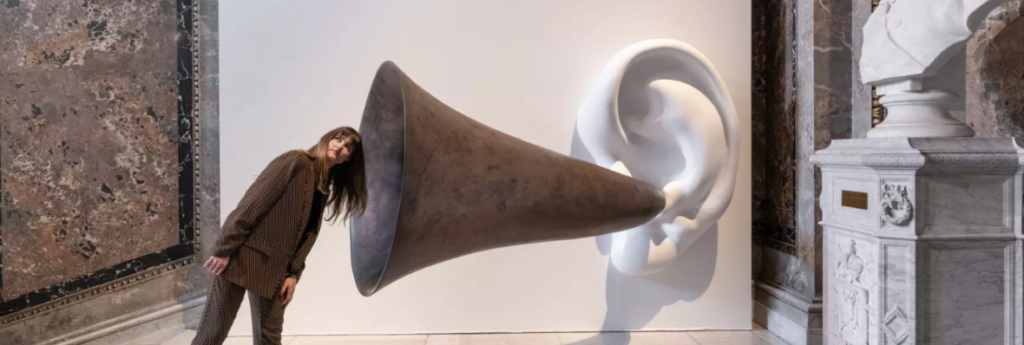Vienna’s Kunsthistorisches Museum is renowned as one of the best of its kind in the entire world, known for a breathtaking collection of art and artifacts spanning five millennia, collected largely by Austria’s Hapsburg rulers. This year, however, it’s only fitting that the K would be inclined to focus on one of the city’s most famous historical residents, Ludwig von Beethoven.
2020 is the 250th anniversary of the birth of the great German composer, who lived in the city for most of his life, and the Kunsthistorisches (Museum of Art History) is presenting “Beethoven Moves,” a just-opened exhibition that will continue through Jan. 24, 2021 that is devoted to his memory.
Jasper Sharp, Adjunct Curator for Modern and Contemporary Art, is quick to point out that the exhibition is not a typical attempt to tell the story of Beethoven’s life, but rather it is designed to be an experimental and intuitive portrait of the complicated man.
“To present an exhibition about Ludwig van Beethoven is a particularly delicate task,” says Sharp. “He’s an extraordinary figure, one of the most famous people that ever lived; and a lot of people know a bit about Beethoven, a few know a lot. So, we had to approach this exhibition with caution, but not too much caution, because Beethoven was not a cautious individual. He was radical and risk-taking, so we attempted to channel a little bit of this radicality and risk-taking.”
To that end, the exhibition of “art and objects” has been put together in four parts – “like the four movements of a symphony” – which, Sharp says “seen together as a whole thread together this remarkable life and legacy.”
It features paintings by Caspar David Friedrich, sketchbooks by William Turner, graphic works by Francisco de Goya, Anselm Kiefer and Jorinde Voigt; sculptures by Auguste Rodin, Rebecca Horn, and John Baldessari; a video by Guido van der Werve; and a new work developed for the exhibition by Tino Sehgal – all of which are brought into dialogue with the music and persona of Beethoven.
Throughout, the exhibition examines Beethoven’s persona as a “tragic genius” who died at age 56 of cirrhosis of the liver (possibly caused by hepatitis), previously having gone deaf (but still producing some of his greatest work) – a condition that visitors can ponder in Room II, which is uniquely dedicated to silence and stillness, representing Beethoven’s increasing hearing loss and the associated pain, isolation and reflectiveness.
In the first gallery, Sharp says patrons will be “shocked” by “Concert for Anarchy,” a piano hanging from the ceiling that periodically opens and begins to play.
Other aspects of the exhibition include listening experiences, as well as concerts (free with admission to the exhibition). Virtual podcasts and playlists can be found on Spotify.
“Museums are treasure houses, part of the cultural consciousness and tourist magnets, but beyond that, they are also discursive spaces for reflection and confrontation, laboratories for fantasy and the connection of ideas – these aspects will become particularly clear in this exhibition,” states the museum, adding, “’Beethoven Moves’ is thus intended as an invitation to enter into a very personal encounter with the great composer.”
The Vienna Tourist Board (VTB), which spotlighted the exhibition as the first entry in its Vienna Showcase livestream series (and introduced to the trade early this week at a live breakfast presentation in Toronto), is mindful that it may not be easy for international visitors to attend the exhibition during the pandemic. However, to that it is observed that the Kunsthistorisches is always a precious place to visit.
And, says VTB director Norbert Kettner, “Keep in mind, Vienna will still be the most beautiful city in the world after the coronavirus passes.”
Check out this preview of Beethoven Moves on YouTube.

